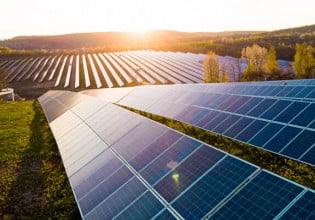ABB Power Systems achieved an important project milestone by installing DolWin beta, the world's most powerful offshore converter station in the North Sea. The 320-kV converter station, housed on an offshore platform, has a 916MW power transmission capacity, making it the world's most powerful installation of its kind, enough to power more than 1,000,000 households with clean energy.
The offshore converter station is part of the DolWin2 project which will be operated by transmission system operator TenneT and will connect offshore wind farms in the North Sea's DolWin cluster, currently the largest offshore wind farm cluster worldwide, with the German grid. The main function of the station will be to convert the electricity generated by the offshore wind farms from AC into HVDC for efficient and reliable transmission to the mainland.
“After the successful handover of the DolWin1 link in July, this is another key milestone in the execution of our offshore wind projects,†said ABB CEO Ulrich Spiesshofer. “It is a further example of our focus on relentless execution and of the ongoing progress in the Power Systems division’s Step Change program.â€
DolWin2 is part of Germany’s energy transition roadmap, called “Energiewendeâ€, which foresees the generation of more than 6.5GW from offshore wind by 2020 and 15GW by 2030. The DolWin1 grid connection, which ABB commissioned and handed over to transmission system operator TenneT at the end of July 2015, also contributes to this goal.
The complete platform including substructure weighs around 23,000 tons and is around 100 meters long, 70 meters wide and 100 meters tall. It was transported last year from Dubai, where it was built, to Aibel’s shipyard in Norway. Here, the platform was outfitted and one week ago sailed away to arrive after a short transportation phase of four days at its final destination in the DolWin cluster, 45 kilometers off the German coast. DolWin beta utilizes an innovative self-installing gravity-based structure (GBS) concept, whereby the platform is slowly ballasted down to the seabed by filling the six columns with water, which will in the coming weeks be completely replaced by gravel to permanently secure the platform.
“Putting such a huge platform in place is one of the most delicate operations in the delivery of an offshore power link, requiring intensive pre-planning and cooperation between the stakeholders involved and we are pleased that this important project landmark has gone smoothly,†said Claudio Facchin, President, ABB Power Systems division.






